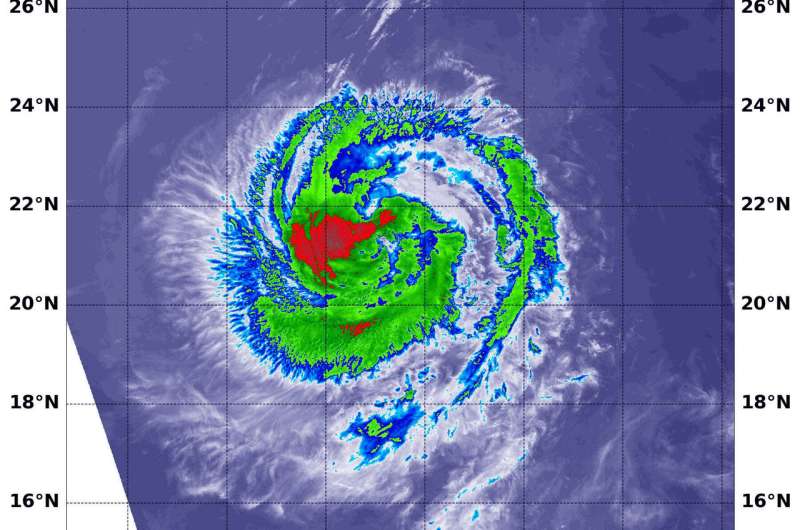NASA finds a weaker hurricane Juliette

Hurricane Juliette has been weakening and NASA-NOAA's Suomi NPP satellite provided a look at the strength of storms within.
At 5:00 a.m. EDT (11:00 PM HST) on Sept. 6, the National Hurricane Center (NHC) projected that Hurricane Juliette would decline to a tropical storm sometime on Friday and NASA had satellites hovering overhead revealed the hurricane's slow decline.
The NOAA-NASA Suomi NPP satellite passed over the decaying storm on Sept. 5 at 4:42 p.m. EDT (20:42 UTC) and observed the storm using the Visible Infrared Imaging Radiometer Suite (VIIRS) instrument. VIIRS showed the strongest storms were located in the western quadrant of Juliette. The National Hurricane Center noted 18 minutes later, "Deep convection associated with Juliette has decreased in coverage over the past 24 hours, however, the remaining convection still wraps completely around the center."
Infrared imagery reveals cloud top temperatures, and the higher the cloud top, the colder it is, and the stronger the storm. Coldest cloud top temperatures were as cold as minus 70 degrees Fahrenheit (minus 56.6 Celsius) and found west of the center of circulation. Storms with cloud tops that cold have been found to generate heavy rainfall. Probably due to the fact that Juliette is decaying, the eye is not well-defined in this image and the strongest storms are no longer ringing the eye.
The NHC reported that at 5 a.m. EDT "(0900 UTC), the center of Hurricane Juliette was located near latitude 22.4 degrees north and longitude 122.7 degrees west which is about 815 miles (1,315 km) west of the southern tip of Baja, California. The maximum sustained winds are 80 mph (130 kph). Juliette is moving toward the northwest near 10 mph (17 kph). A motion toward the west-northwest should begin later tonight or Friday. A turn toward the west is forecast on Saturday and a general westward motion should continue through the weekend. The estimated minimum central pressure is 984 millibars."
NHC predicts that additional weakening during the next few days, and Juliette is expected to become a tropical storm by Friday night, and degenerate into a remnant low pressure area on Sunday.
Provided by NASA's Goddard Space Flight Center





















